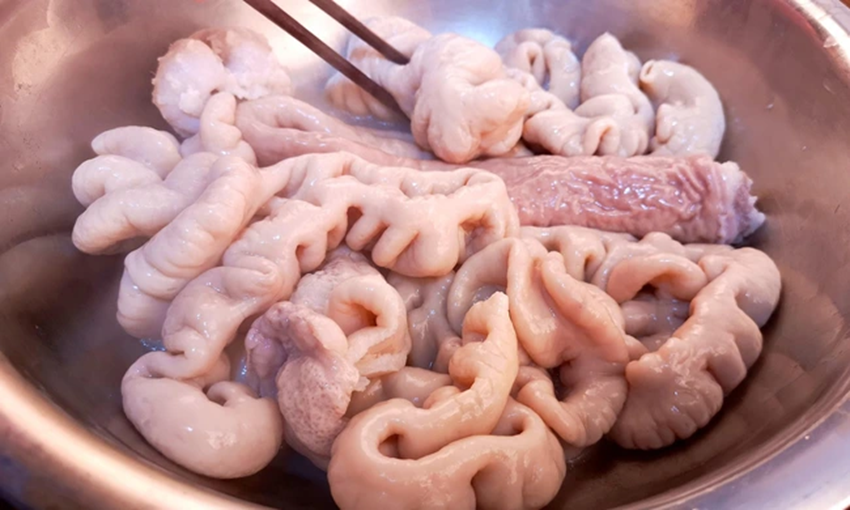How to Clean Pig Intestines for a Delicious Dish
Pig intestines are a delicacy enjoyed by many, but they can be a challenge to clean properly. This guide will show you an effective and affordable way to get them squeaky clean, removing any unpleasant odors.
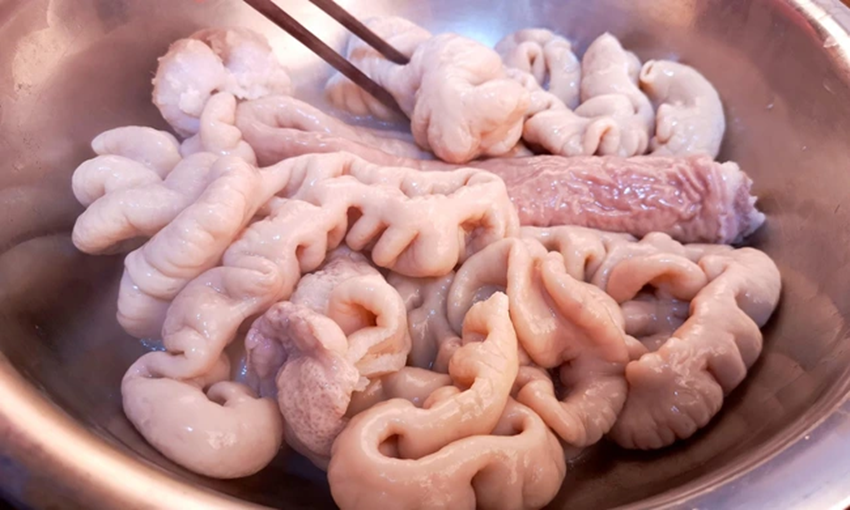
Pig intestines, or “lòng lợn” as they are known in Vietnam, are a popular ingredient due to their tender texture and delicious flavor. They are rich in protein, fat, carbohydrates, and various vitamins and minerals. However, they often require thorough cleaning before cooking to ensure they are free from any unpleasant odors or residues.
Many people opt to buy fresh pig intestines and clean them at home to ensure they are hygienic and properly prepared. While some common methods involve using vinegar and salt, there is a more effective and affordable approach using a common kitchen staple.
The Cornstarch Method for Cleaning Pig Intestines
- Rinse the intestines in a large basin of water. Remove any excess water from the intestines, then turn them inside out.
- Place the intestines back in the basin and add an appropriate amount of cornstarch. Rub the cornstarch vigorously into the intestines, paying special attention to the folds and creases.
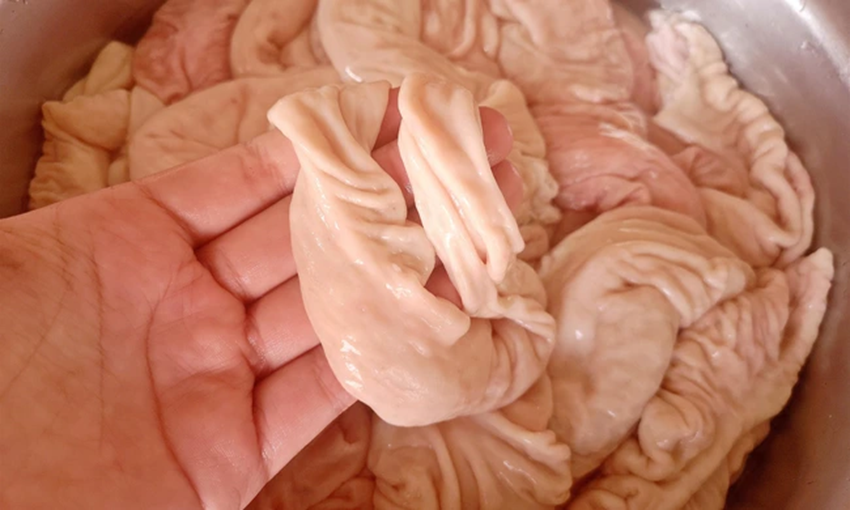
- Continue adding cornstarch and rubbing until the cornstarch becomes a soggy paste. This process will draw out the fat and impurities from the intestines, leaving them clean and odor-free.
- Once the intestines are clean, turn them back to their original position. In a pot, add water, scallions, ginger, and cooking wine, and bring to a boil. Add the intestines and simmer for 10-15 minutes.
After boiling, remove the intestines and allow them to cool naturally. At this point, they are ready to be used in various delicious dishes, such as the two recipes provided below.
Recipe 1: Pig Intestines and Tofu Stew
Ingredients
- Pig intestines
- Tofu
- Ginger slices
- Scallions
- Garlic
- Dried chili peppers
- Cooking wine
- Light soy sauce
- Salt
- Chicken broth
- Cilantro
- Cooking oil
Instructions
- Cut the pre-cleaned intestines into small pieces. Break the tofu into small pieces, and finely chop the scallions, ginger, and garlic.
- Heat oil in a pan and add the scallions, ginger, garlic, and chili peppers. Sauté until fragrant.
- Add the intestines and cooking wine, stirring well. Gently stir in the tofu, followed by the light soy sauce, and continue cooking until the intestines and tofu turn a light golden color.
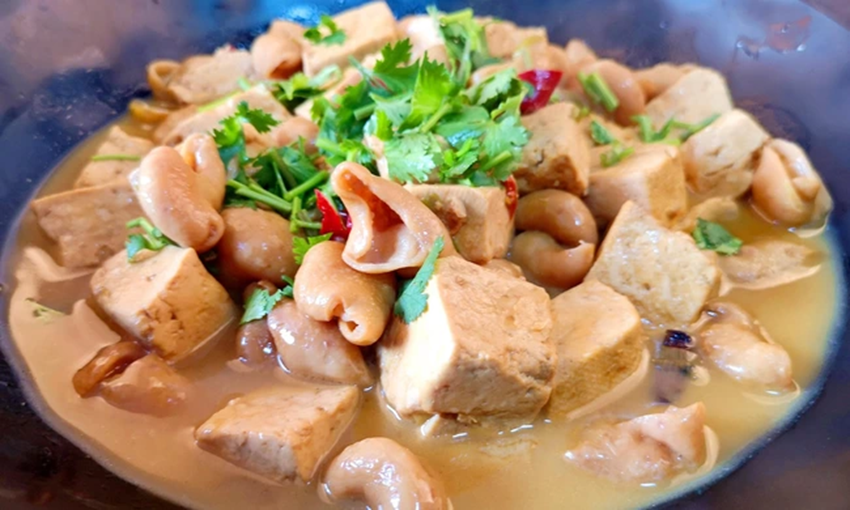
- Add water and bring to a boil over high heat. Season with salt to taste, cover, and simmer for 20 minutes. Finally, add the chicken broth and sprinkle with chopped cilantro before serving.
Recipe 2: Pig Intestines Stir-fried with Green Chili Peppers
Ingredients
- Pre-cleaned pig intestines
- Green chili peppers
- Garlic
- Ginger
- Scallions
- Light soy sauce
- Salt
- Cooking oil
Instructions
- Cut the intestines and chili peppers into small pieces. Finely chop the garlic, and cut the ginger and scallions into strips.
- Heat oil in a pan and add the garlic, ginger, and scallions. Sauté until fragrant, then add the intestine pieces and stir-fry over medium heat until they change color. Add the chili pepper pieces and continue stir-frying.
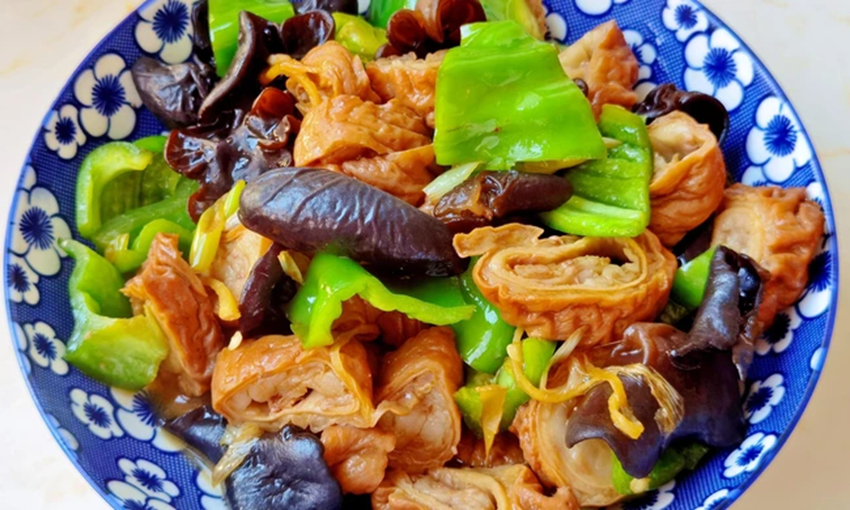
- Pour in the light soy sauce and a moderate amount of salt, and continue stir-frying until the intestines and chili peppers are fragrant. Serve and enjoy!
By following these cleaning and cooking methods, you can enjoy delicious and hygienic pig intestine dishes. Give these recipes a try, and you’ll be delighted by the unique and satisfying flavors they bring to your palate.

Porcelain items can be prone to chipping or breaking, but don’t discard them just yet! With these handy tips, you can restore them to their former glory.
Source: Dan Viet

























